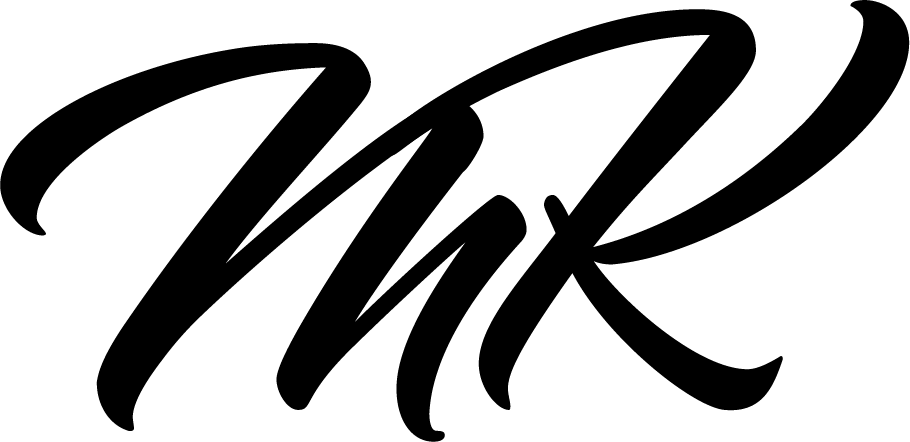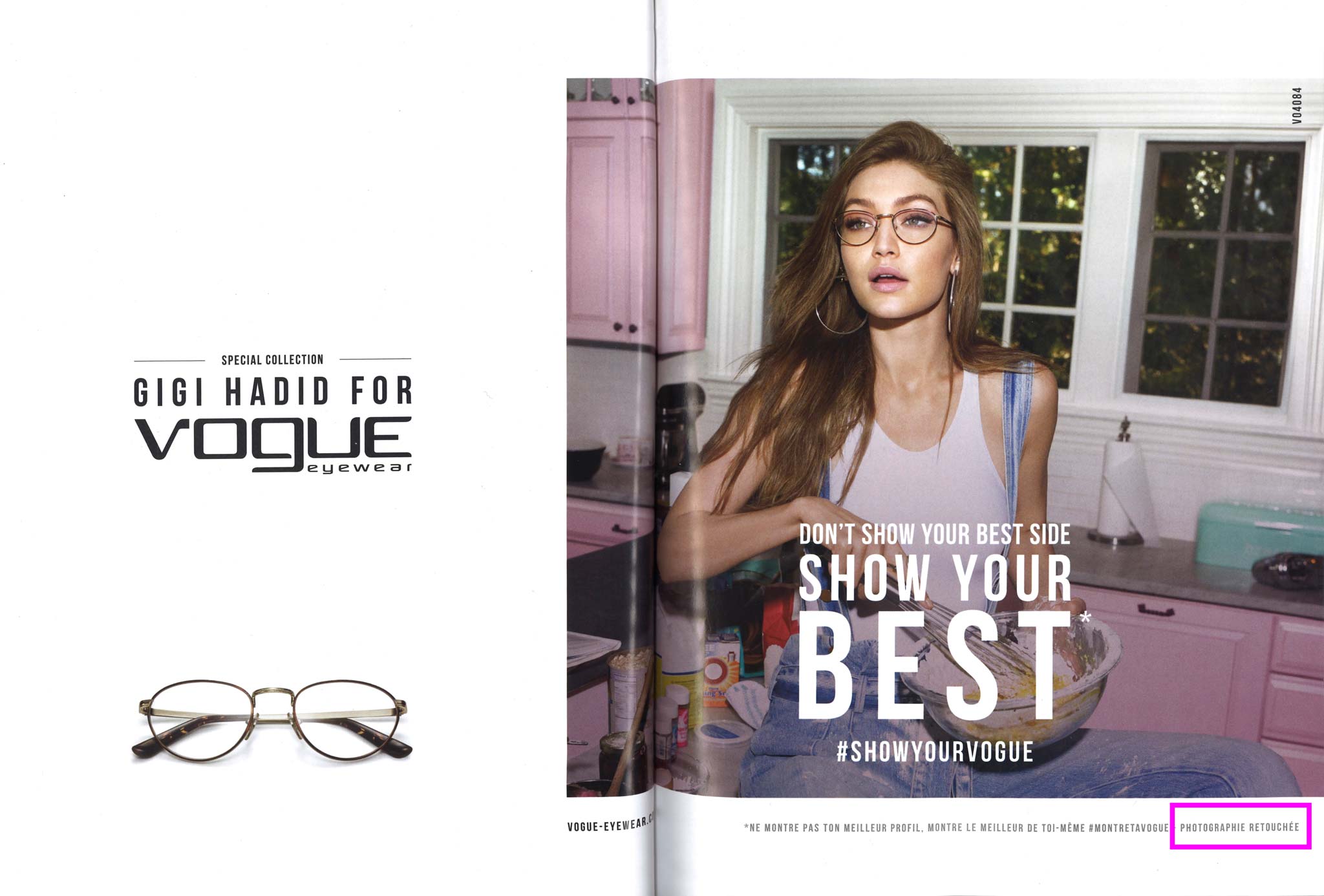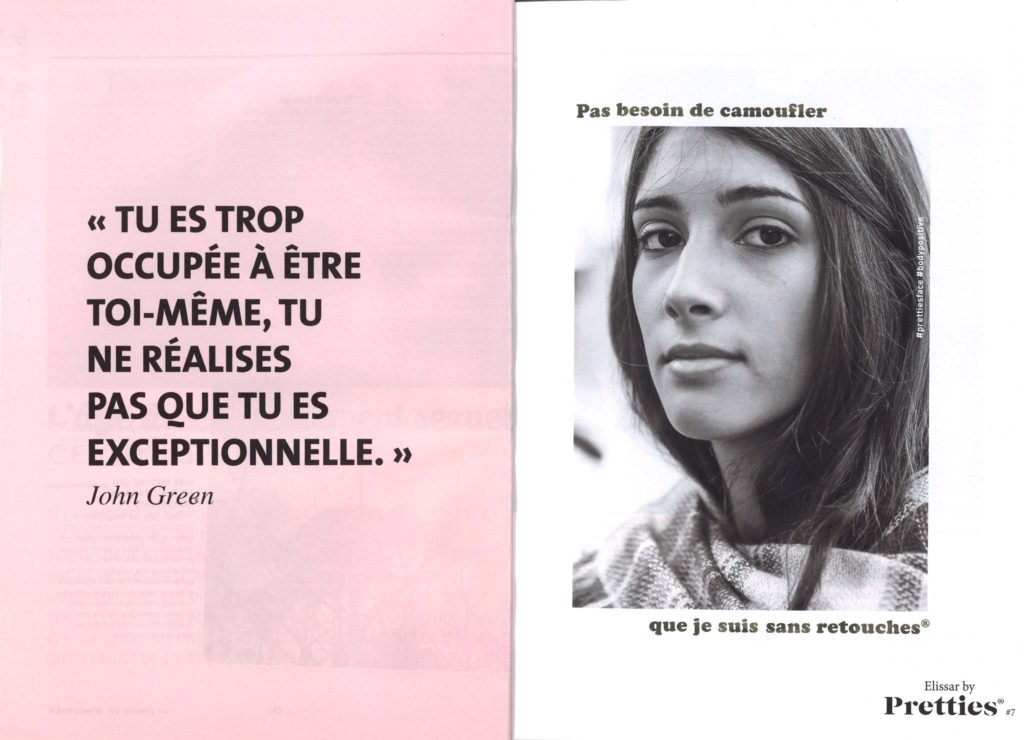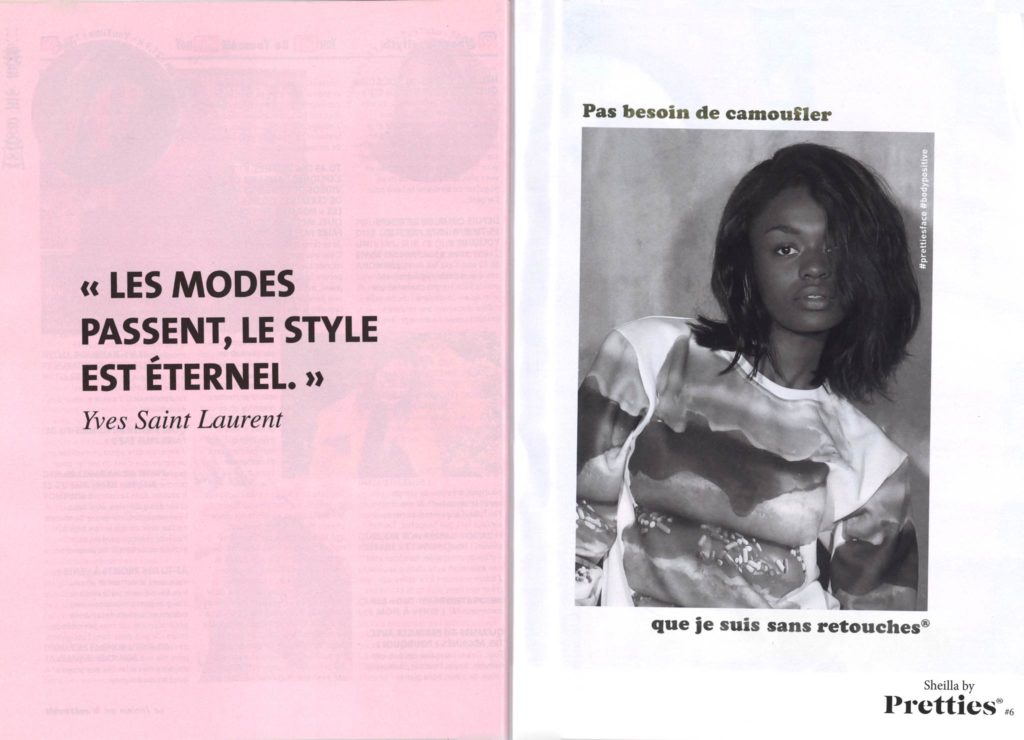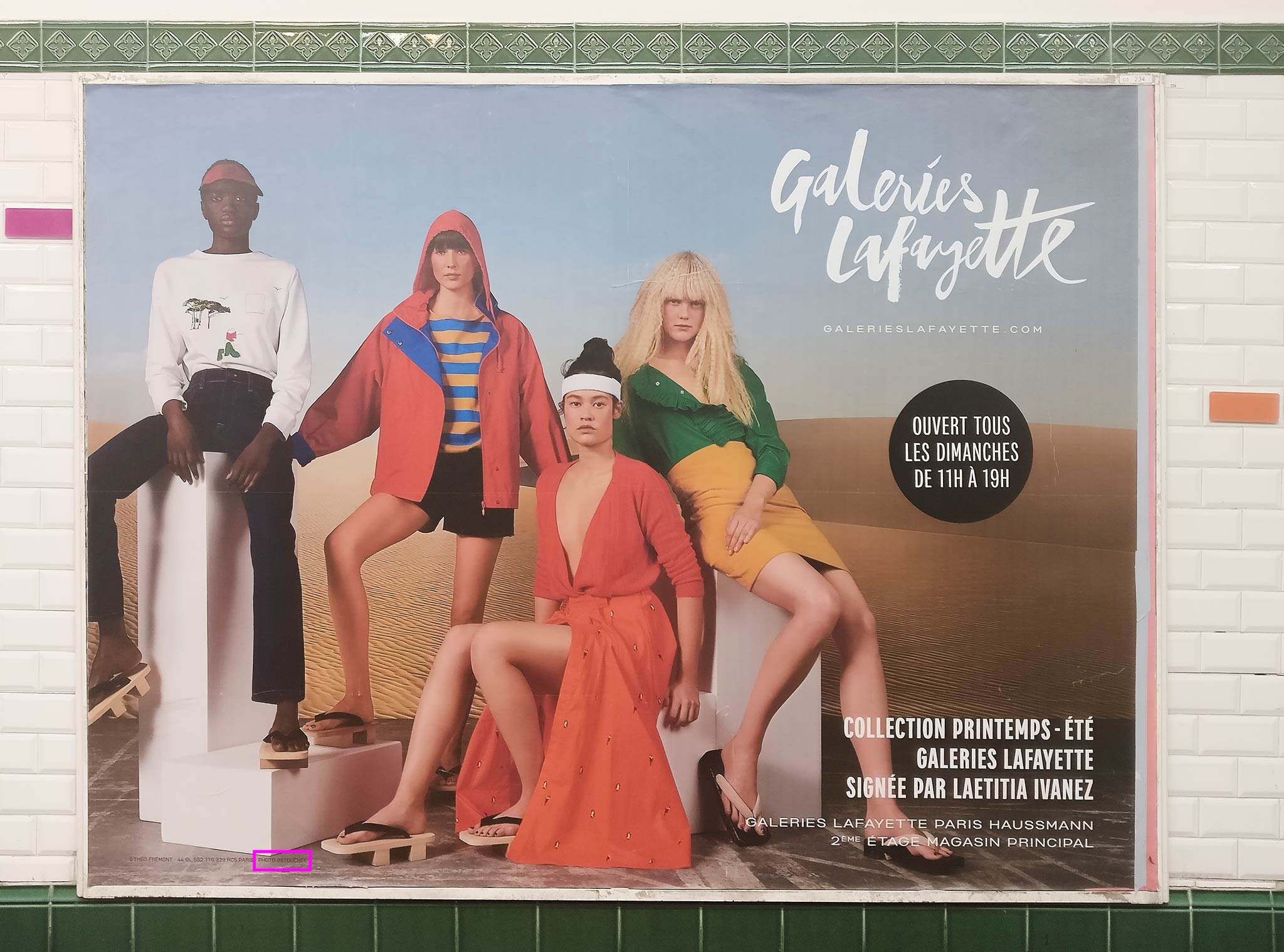
Presence of the retouching label in public
How to deal with an avoidable retouching label in public?
Through a 3-day stay (15.02.2018 – 17.02.2018) for orientation and material procurement in Paris, MK Retouching was able to get an idea of the current distribution of the retouching label “Photographie retouchée” in public places.
Overall, it was noticeable that very few advertising posters with a hint of retouching were to be found in the streets of Paris. Even in the expensive department store Paris Galeries Lafayette, where advertisements are displayed larger than life-size, only one hint could be found at that time (as you can see below).
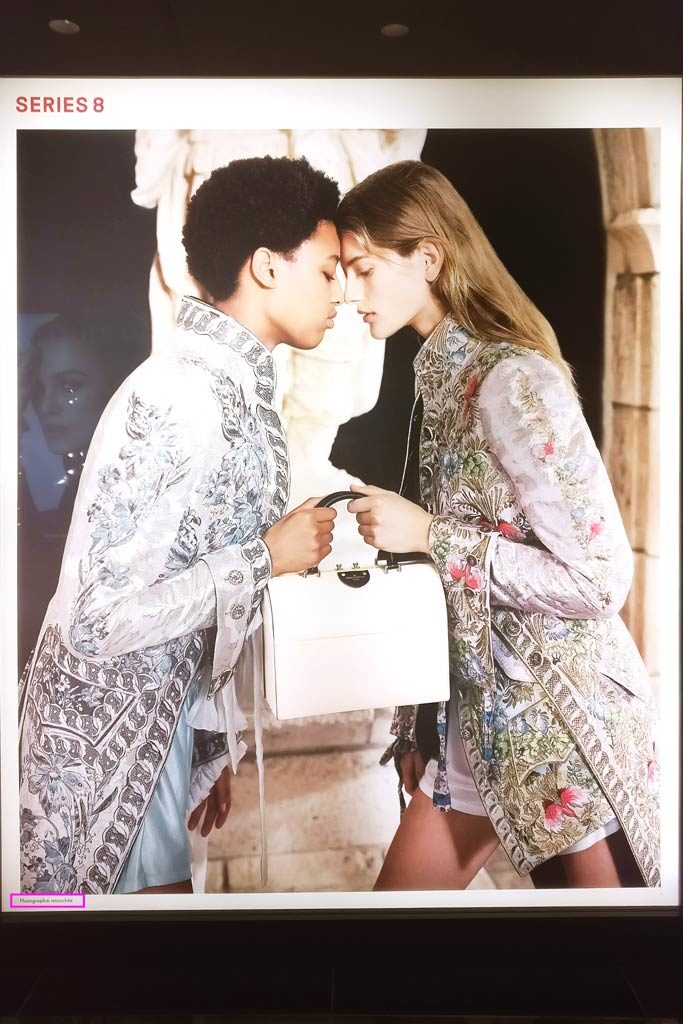
Image 1: A retouched image placed in the Galeries Lafayette department store (approximate size: 2.5 m × 1.5 m)
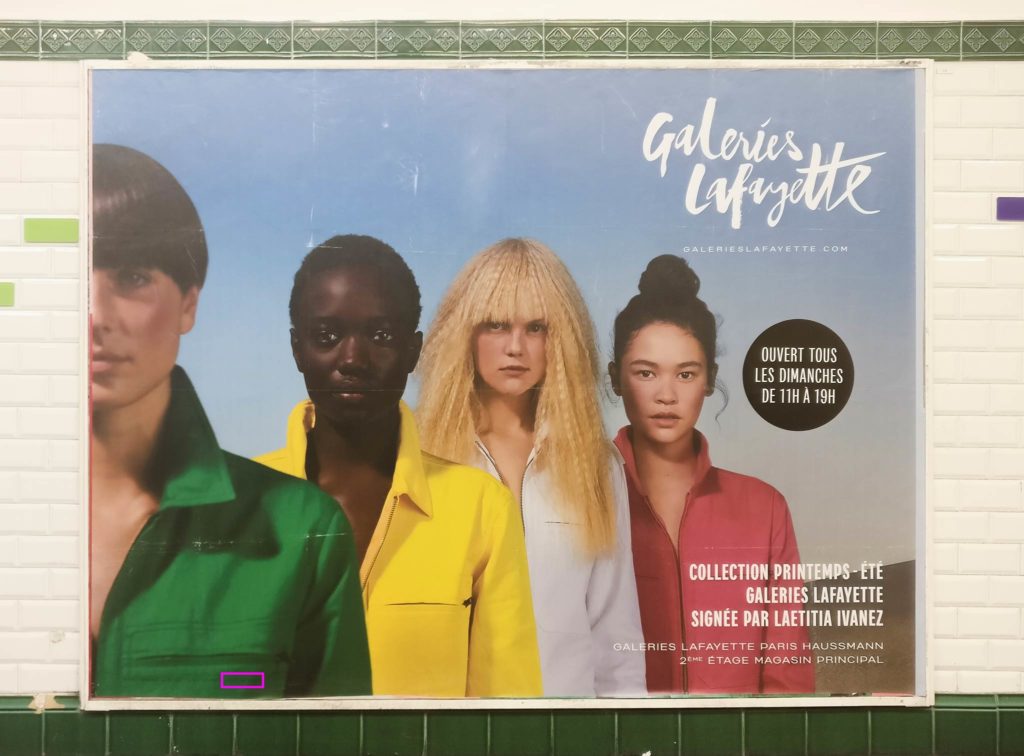
Image 2: One of the findings of the retouching label in the underpass of the MétroStation.
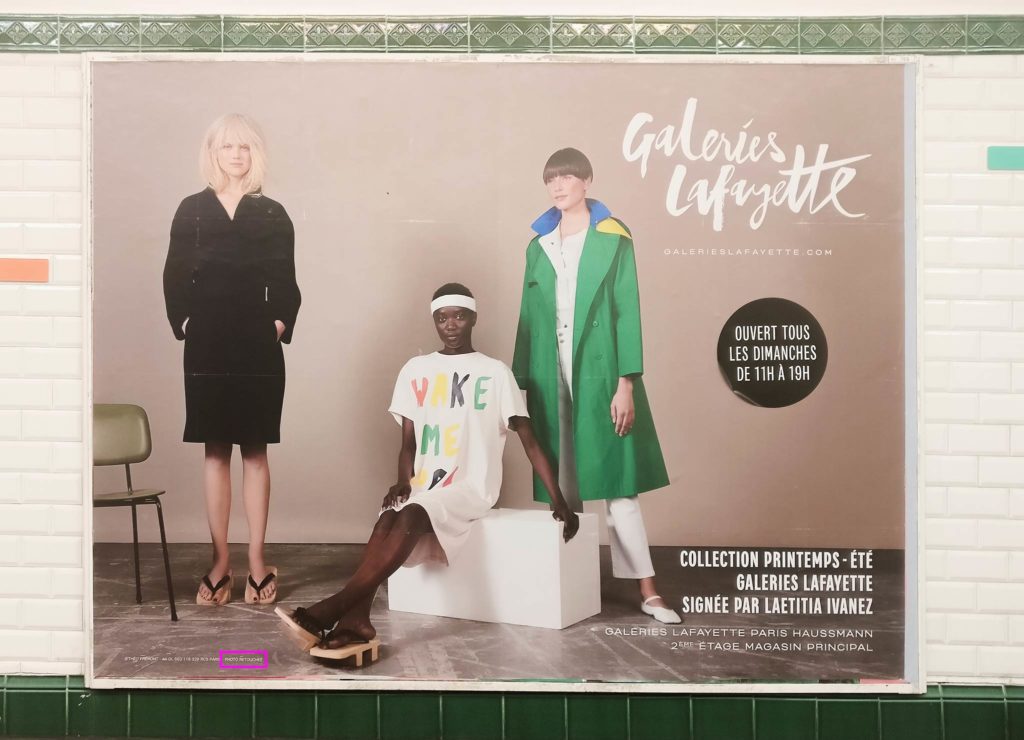
Image 3: One of the findings of the retouching label in the underpass of the MétroStation.
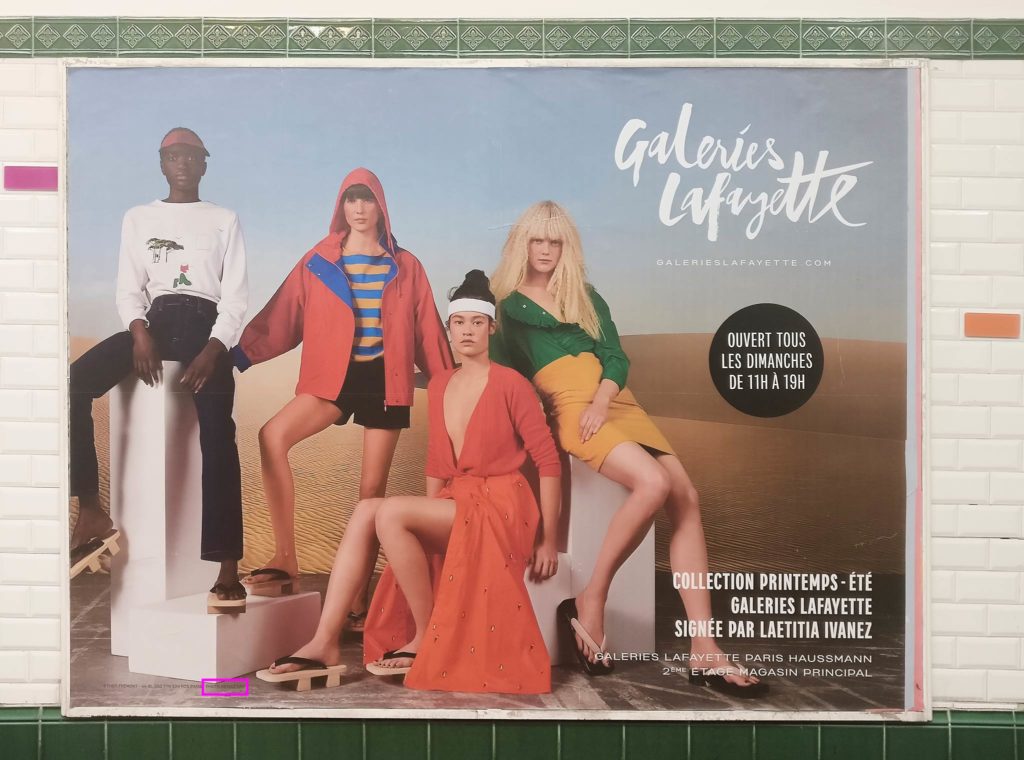
Image 4: One of the findings of the retouching label in the underpass of the MétroStation.
Since this analysis was made several months after the implementation of the new legislation, this raises the question whether the corresponding posters with retouching information are to be found deliberately in places where large crowds under time pressure pass, so that the observation time and thus the detection of the hint should be kept low.
Contrary to the rules, google.fr, the French version of the Google search engine, could only find the counterparts of the ads without the retouching label.
Do you have any suggestions, additions, is this post out of date or, have you found any mistakes? Then we look forward to your comment.
You are welcome to share this post. We are very grateful for every recommendation.
